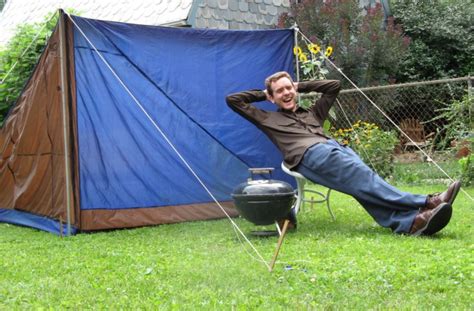Making a Tent: A Step-by-Step Cost Guide
Want to build your own tent? It's a rewarding project that can save you money and give you a unique, personalized camping experience. This guide provides a step-by-step breakdown of the process, along with a detailed cost analysis to help you budget effectively. We'll cover everything from material selection to final assembly, ensuring you're well-equipped to embark on your tent-making adventure.
Choosing Your Tent Design & Materials: The Foundation of Your Project
Before you begin, decide on your tent's design. Simple A-frame tents are easiest for beginners, while dome tents offer more advanced construction and weather resistance. Consider the size needed for your camping needs – a solo backpacking tent will differ greatly from a family camping tent.
Material Selection: This significantly impacts cost and performance.
-
Fabric: Ripstop nylon is a popular choice for its strength and lightweight nature. Silnylon (silicone-coated nylon) offers superior waterproofing but is more expensive. Canvas is durable and weather-resistant but heavier. Costs vary widely depending on the fabric's weight, weave, and water resistance. Budget approximately $20-$100+ per square yard depending on your choice.
-
Poles: Fiberglass poles are affordable but less durable than aluminum. Aluminum poles are lighter and stronger but more expensive. Consider the number of poles required for your design and expect to pay $10-$50 per pole, depending on the material and length.
-
Zippers & Fasteners: Quality zippers are crucial for a reliable tent. Look for heavy-duty zippers designed for outdoor use. Expect to pay $5-$20 per zipper, depending on length and quality.
-
Seam Sealant: Essential for waterproofing seams. A good quality seam sealant will cost around $10-$20 per tube.
-
Stake & Guyline Materials: You'll need stakes to secure your tent and guy lines to provide additional stability. Expect to spend around $10-$30 for a complete set.
Step-by-Step Construction: Bringing Your Tent to Life
-
Cutting the Fabric: Accurately measure and cut your fabric panels based on your chosen design. Use sharp scissors or a rotary cutter for clean cuts.
-
Seaming the Panels: Sew the fabric panels together using a strong, durable thread. Reinforce seams with seam tape for added strength and waterproofing.
-
Attaching Zippers & Fasteners: Carefully attach zippers to door panels and any other necessary openings.
-
Applying Seam Sealant: Apply seam sealant to all seams, paying close attention to areas prone to leaks. Allow ample drying time before proceeding.
-
Attaching the Poles & Hardware: Attach grommets or other hardware to the fabric panels where needed for pole attachment.
-
Assembling the Tent Frame: Assemble the tent frame according to your chosen design.
-
Final Assembly & Testing: Attach the fabric to the frame, ensuring a snug fit. Test the finished tent for leaks and stability.
Cost Breakdown: A Realistic Budget
The cost of making a tent varies significantly based on design complexity, material choice, and the number of features included. Below is a sample cost breakdown for a simple A-frame tent:
| Item | Estimated Cost |
|---|---|
| Fabric (Ripstop Nylon) | $50-$100 |
| Poles (Fiberglass) | $20-$40 |
| Zippers | $10-$20 |
| Seam Sealant | $10-$20 |
| Stakes & Guy Lines | $10-$30 |
| Thread & Other Supplies | $10-$20 |
| Total Estimated Cost | $110-$220 |
This is a rough estimate, and costs can increase significantly depending on the complexity of your design and the materials you choose. Remember to factor in the cost of your sewing machine if you don't already own one.
Frequently Asked Questions (FAQs)
How long does it take to make a tent?
The construction time depends on your experience and the tent's complexity. Expect to spend anywhere from a few hours to several days, depending on your chosen design.
What tools do I need to make a tent?
You will need a sewing machine, sharp scissors or a rotary cutter, measuring tape, pins, and potentially other specialized tools depending on your tent design.
Can I make a waterproof tent?
Yes, by using waterproof fabrics like Silnylon and applying seam sealant to all seams, you can create a waterproof tent.
What are the advantages of making my own tent?
Making your own tent allows you to customize the design, choose high-quality materials, and often save money compared to purchasing a pre-made tent. It's also a very rewarding experience!
Where can I find tent-making patterns?
Numerous online resources and books offer tent-making patterns. You can also design your own pattern based on existing tent designs.
Making your own tent is a challenging but rewarding project. With careful planning, attention to detail, and the right materials, you can create a custom tent perfectly suited to your needs and camping style. Remember to prioritize safety and carefully follow all instructions throughout the process. Happy tent making!

